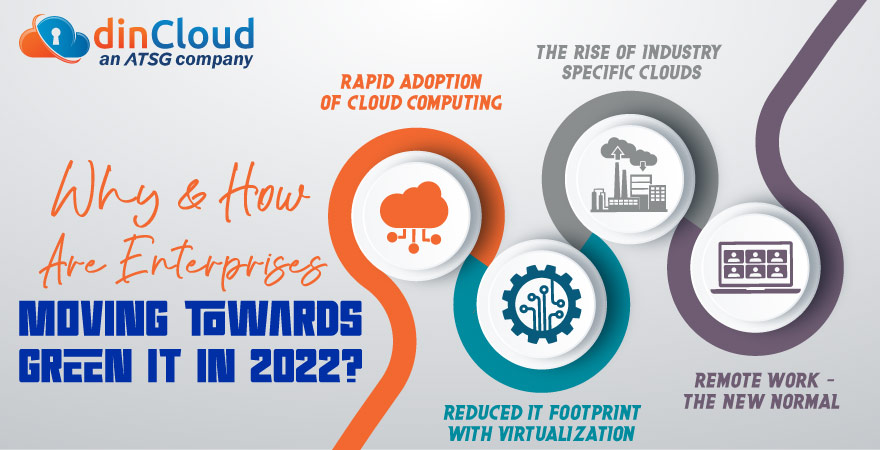Each one of us would be quite familiar with the term “Go Green”. While this term does not literally imply the green color itself, it signifies an awareness, and the need among businesses to move towards sustainable IT infrastructures as well as practices.
The past two decades have been really productive when it comes to greener initiatives across corporations. It is estimated that presently, an overwhelming 80% of companies all over the globe are reporting their sustainability efforts.

Related: How to Navigate Cloud Security in 2022 – The Balanced Way?
While the true extent of this reporting could be subject to debate, but this truly depicts a move in the right direction. Any green initiatives across an organization also align perfectly with corporate social responsibility.
Traditionally, IT hardware and infrastructures are guzzlers of both energy and power. This trend is picking up further momentum, as we move towards designing IT hardware that is capable of phenomenal performance.
According to an estimate, the global energy demand related to IT could double by the year 2030. This statistic alone is more than enough to serve as a starting point among enterprises to adopt greener initiatives across the board.
In this post, we will discuss how enterprises are moving towards green initiatives, and why these steps are being taken in the right direction.
Related: Why Moving to Cloud Computing Still Makes Sense in 2022?
Rapid Adoption of Cloud Computing
As per the estimate of International Data Corporation (IDC), the rapid rate at which enterprises are adopting Cloud Computing solutions and services alone will reduce one billion metric tons of carbon dioxide emissions between the years 2021 and 2024.
This move towards cloud computing infrastructures has been proliferated with the introduction of hybrid cloud environments. The hybrid cloud allows maximum leverage to deploying enterprises on where they want to host their data as well as workloads.
The Rise of Industry Specific Clouds
Another factor that has really acted as a catalyst for adopting cloud solutions globally is the introduction of industry specific clouds. This in turn is enabling organizations in traditionally highly regulated industries like Finance and Healthcare to adopt Cloud Computing.
Related: How to Re-Define Public Sector IT for Better Outcomes?
By bringing regulated industries and business sectors within the fold of Cloud Computing, the world is moving towards greener IT infrastructures. Some organizations from regulated industries are even shutting down their on-premise data centers after moving to the Cloud.
Related: The Trend of Cloud Adoption to Retain its Momentum in 2022
Reduced IT Footprint with Virtualization
Whether its servers, desktops, data or applications, the IT world is rapidly moving towards virtualization. By doing so, enterprises are able to make a much more efficient use of hardware, both from an environmental friendly as well as efficiency standpoint.
This in turn eliminates, or at least reduces the need for having on-premise IT hardware. Then, there are certain overheads associated with such IT hardware, which include physical space, rent, heating, cooling, ventilation and on-going maintenance.
Remote Work – The New Normal
In the US alone, it is expected that nearly 25 to 30% of the workforce will continue to work remotely in the year 2022. This new remote work trend is proving mutually beneficial for both employees as well as employers.
Employees no longer have to bear the costs and stress of a daily commute to the workplace. Employers, on the other hand, are satisfied that it is largely “business as usual”, with the added benefit of saving a lot of overheads like rent and power etc.
It is estimated that with every 100 employees that have now shifted towards remote work, an enterprise stands to save US $1.4 Million per year. This is a proposition that most enterprises would feel really comfortable carrying on.
Conclusion
Whether its virtualization or remote work, we observe that Cloud Computing is the main enabler for such greener IT infrastructure initiatives. As we recover from a global pandemic, businesses will be able to make much more aggressive moves to go green.
If your enterprise also desires to achieve a greener status with minimal efforts, then dinCloud’s solutions and services can be the perfect enabler for this transition.


